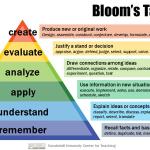One snowy night in January, I went to visit Elizabeth Bennett and Tracy Douglas. Elizabeth is an administrative assistant and Tracy is a dental assistant. This working-class couple and their two children (from Tracy’s prior heterosexual relationship) share an apartment on the Grand Concourse in the Bronx. They invited me to a card party, and when I arrived there were about 10 other black and Latina lesbians there. In one of the bedrooms, several children were playing games and watching television. I left their home with a better knowledge of how to play spades, but also with a realization that I knew very little about their lives and experiences as lesbian women. As a group they were particularly invisible, both to larger LGBT groups and activists and to the larger African-American and Latino communities they lived in as well.
I wrote Invisible Families: Gay Identities, Relationships, and Motherhood Among Black Women as a corrective to the focus of the media, LGBT activists and scholars of LGBT life on white, middle-class groups, and the persistent lack of information on gay women of color. I followed more than 100 middle-class and working-class black lesbians for three years and found that the structure of their family lives is grounded in African-American culture. The women in my book grew up in the 1960s and 1970s in large cities, small Southern towns and the Caribbean. One of my principal findings is that these women live in black communities, not “gay ghettos,” and that social location shapes their identities, family formation, and other understandings in ways that differ from some white LGBT people. Reports by the Williams Institute at UCLA Law confirm that like the women I interviewed, LGBT people of color in general tend to live in areas where there are significant concentrations of other racial/ethnic minorities. This is different from the general patterns of white gay couples, who are more likely to live in areas with significant concentrations of other LGBT people.
Read more here















